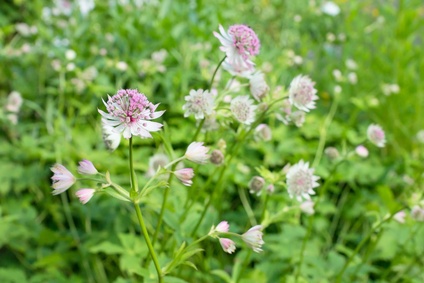Introduction
En latin : Astrantia Major (Apiaceae)
La sanicle de montagne est une plante légèrement toxique, herbacée et pérenne dont le rhizome (la racine) présente une particularité, il est noir. Cette espèce pousse spontanément en Europe à l'intérieur des forêts claires, au voisinage des eaux, dans les prairies et les fourrés.
Le rhizome et la tige de la sanicle de montagne sont utilisés en phytothérapie.
Propriétés et indications
- Apéritive (stimule l'appétit)
- Diurétique
- Accentue la sécrétion des sucs gastriques (stomachique)
ATTENTION : LES PLANTES CONTIENNENT DES PRINCIPES ACTIFS QUI LES RENDENT EFFICACES MAIS QUI PEUVENT AUSSI LES RENDRE DANGEREUSES.
- RESPECTEZ LES QUANTITÉS RECOMMANDÉES
- N'UTILISEZ QUE DES PLANTES CERTIFIÉES (ATTENTION AUX CUEILLETTES – RISQUE DE CONFONDRE UNE PLANTE TOXIQUE AVEC UNE PLANTE CURATIVE) : IL EST PRÉFÉRABLE DE VOUS APPROVISIONNER EN HERBORISTERIE OU EN PHARMACIE
- SI VOUS SUIVEZ UN TRAITEMENT MÉDICAL, QUEL QU'IL SOIT, DEMANDEZ L'AVIS DU MÉDECIN OU DU PHARMACIEN AVANT D'UTILISER DES PLANTES (RISQUES D'INTERACTIONS)
- DEMANDEZ UN AVIS MÉDICAL AVANT D'EN DONNER À UN ENFANT OU À UNE PERSONNE À LA SANTÉ FRAGILE
Crédit photo : Blooming astrantia in a flower bed – JGade – Fotolia.com
